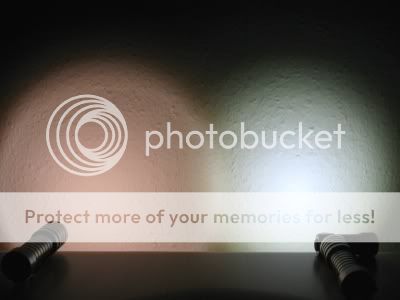 Warning! Long winded post ahead. Bring beer and chips.
Warning! Long winded post ahead. Bring beer and chips. 
Now that LED lights rule the planet, several things changed. We have brighter and brighter lights with more and more efficient emitters. We have a huge diversity of beam shapes and a multitude of different lights of all kinds available to feed our hunger.
One thing though I think is still underrated. The ability of LED lights to be driven below spec with positive instead of negative effects, unlike incan bulbs. This gives us this thread title. The LOW LEVEL. While we often state that we want a "lower low" in almost all of our lights, the evaluation of this new beast, the low level, pretty much ends there.
However, the low level has much more to offer, and since I am not that well trained with words like some others in these halls, I'll mostly let the pictures do the talking. I'll demonstrate a few very interesting low level options we now have at our disposition.
For this, we'll use some of those lights (always with new batteries) to demonstrate a few things:

First, the reference point. Something we all know. The overdriven 5mm Nichia DS or GS LED, not that I could distinuish the two, and not that it mattered:

Photon Freedom White, always at full power

A Zebralight H30 - a Cree XR-E Q5 behind an acrylic optic producing a concentrated flood beam (3 brightness levels)

A McGizmo LunaSol20 (left) running 3 x Nichia 3mm (20mA) on low and a Golden Dragon (400mA) on high as well as a ...
... McGizmo SunDrop-3S (right) running a Nichia 083 High CRI LED behind a custom sapphire optic for a concentrated flood very similar to the Zebralight at 400mA (3 brightness levels)

Surefire E2L 2-stage version with a Cree behind a TIR and ...
Surefire U2A, a 6-stage light running a Seoul SSC P4 LED in a reflector.
All those lights can produce a low level of illumination in addition to their main beam, some have different beams on high an low, some do have flood only with no throwing high beam.
In this post, we'll focus on what those lights can do for us in situations where a 10.000 lux blaze of light would be most unwelcome and where either a low level of illumination or a different type of beam is required.
All pics are shot with fixed camera settings and white balance "daylight", and all pics have been made brighter for the same amount (of course they came out too dark :green
The problem of the auto white balance is an obvious exaggeration of the differences in beam color. It is also good to know that the camera exaggerates the contrast of the illumination, meaning our eyes are able to adapt better to the different levels of light than the camera can, for the eyes, the scenarios look less harsh and pronounced. But since this effect helps me to illustrate my points, I really do not mind it
The lights do not put out the same luminous flux of course. I adjusted those with more than one lower level to an adequate brightness level to my eyes, meaning a level that was actually useful to me, all those who can't be adjusted have to do with what they can offer.
First ... reading a book
A typical task for low level illumination is reading something. A book in a tent, a map, whatever.
The light was held approximately 30cm or so next to the head of the researcher for a comfortable reading position.
The pics:

Photon Freedom on maximum burn

SF E2L, low level

McGizmo LunaSol20, low level (3x3mm Nichia)
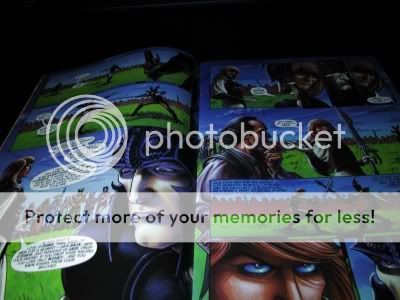
Zebralight H30 on medium
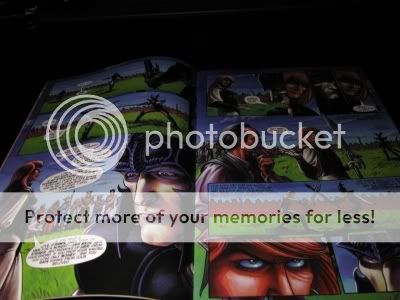
McGizmo SunDrop-3S on medium

Surefire U2A on Level3/6
As we can see ... flood beams rock in this application and spot beams suck. It is that easy. Close-up work ... 1:0 for the flood team.
Another noteworthy fact is the color rendition where the Nichia 083 High CRI in the SunDrop kills the competition. This is a big difference for those reading intellectually thrilling comic books or those reading maps, I suppose.
Here's an incan shot as a comparison, a SF N1 lamp, showing the reddish incan spectrum where the Nichia 083 is right in between the incan and the other LEDs :

Next ... near field illumination
The typical situation where you look for something on the floor, do some work on the back of your computer etc. As this is a pseudo-scientific post, we'll add some tacticool to the mix.
Sgt. Smith in his mean (and dusty) Battletank :

... is looking for some lost crew members in the urban jungle:

... and we must illuminate his way and help him find them.
Distance to target (light to the tank, which is about 15cm long) is roughly 70 cm or so. The crew members hide in the lower right corner of the map.

Photon Freedom on maximum burn

SF E2L on low

McGizmo LunaSol 20 on low

Zebralight H30 on medium

McGizmo SunDrop-3S on medium

SF U2A Level 4/6 now since Level 3/6 was too dim
IMHO we can draw similar conclusions as above, nothing new to report. Our tough warrior would find his men with a flood beam of sufficient strength. Orientation with such a beam is way superior to spot beams, AND a flood beam is way more forgiving when you move the light around a bit, by accident or not.
Last ... room sweeping
Another typical task ... illuminating the interior of our homes when navigating or doing other things that do not require switching on the big bad CFL at the ceiling.

Photon Freedom max

Sf E2L on low

McGizmo LunaSol20 on low

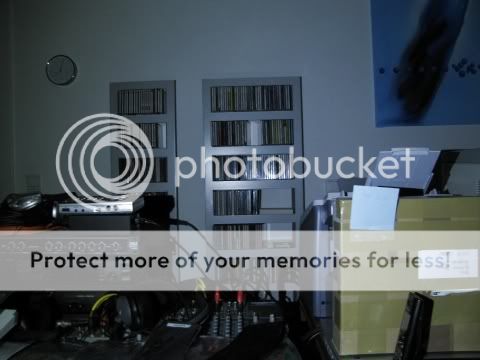
Zebralight H30 on medium (above) and high

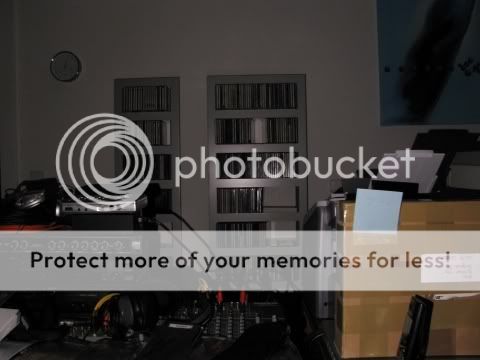
McGizmo SunDrop-3S on medium (above) and high

SF U2A Level4/6
Those pics show in a most impressive (because exaggerated by the camera) way the tunnel vision you get with throw lights in close quarters. Due to the high lux of the spot and the big dynamic range in comparison to the spill, the eyes (and even more so the camera) adapt to the spot which makes peripheral vision outside the spot difficult, which is hard on the eyes and which requires a very good and steady aim of the light to avoid loosing your "target".
Flood beams are way more useful here and easy on the eyes and require no special training classes in "how to aim a flashlight".
With the H30, we get the additional benefits of it being a headlamp, too, which can come in quite handy. An interesting point is the superior and very pleasing color rendition of the SunDrop with the Nichia 083 High CRI.
Note that the lux at the beam center in the middle of the pics is lower for the H30 and the SunDrop than for the other lights, yet the broad illumination they provide is way superior. As is the power consumption though.
BUT this comparison shows something else, too. It shows the usefulness of a dedicated flood and/or low beam light. Look what both the Zebralight and the SunDrop can do:
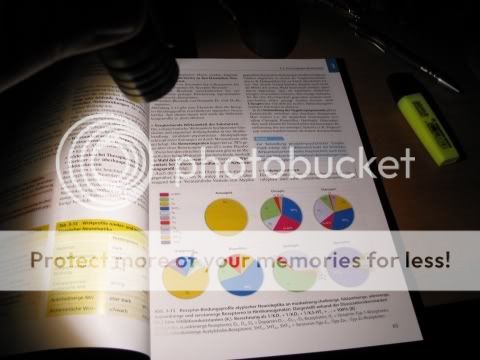

SunDrop-3S example
Both those lights can deliver a concentrated flood at various intensities and can thus deliver an adequate "surround beam" for ultra close-up as well as room illumination where the lux numbers appear very close, which is relaxing for the eyes and very practical. The boring book and the table are illuminated with the same brightness at the various distances.
No other light in this comparo can do this, and while this sounds really lame and uninteresting, it is soooo practical and ergonomic in use.
Of course this post is very biased towards the needs of lower lux illumination and the lights that look like real loosers now didn't get a chance to show their muscles. But oh well, those were the rules of the game, and those situations are common enough to warrant specific lights that fulfill those requirements.
There are a few lights that do very well both in the near field and in a more throw-oriented environment. Here, it is the LunaSol20 with a floody low and a throwing high beam (not featured today). Similar and well known is the SF A2 incan/LED combo and also the Streamlight TwinTask lights. None of those excels in any particular lighting need, but they are th emost overall usefull tools from a general lighting point of view.
I am sorry for not including a SF A2 here, but I sold my black one and the new one isn't here yet :green:
In the end ... the low level is more than just less light. Or better ... it can be more, if you have a light that was built with this in mind.
Flood beams simply rock in this application, and the new High CRI LEDs that surface now add a very nice and useful touch to it, too. With the enormous flux of the power-LEDs we have today, we can well afford to loose a few lumens in order to gain color control of this magnitude IMHO.
- IMHO a light that has both a floody low and a throwing high is more useful than a light with a uniform beam at low and high, and it is so more than you might think if you have never experienced it to date.
- IMHO a dedicated flood light with more than one level is a must for any flashaholic doing close-up work on a regular basis. If this light has a High-CRI LED, even better.
- the low level is more than just less light. It is a different light in many ways, but just as important than the high level. It has even merit on its own, without a throwy high level, see above.
Those three last ones are my personal conclusions to all this low level stuff. It is just as important to master the low level and the flood as it is to master the blaze of glory that rivals the sun. Because you really need it more often
So ... anyone who wants to take my LunaSol20 or my SunDrop from me ... you're welcome to try :devil:

A historical note:
There is a reason that there are two McGizmo lights in this comparison. I mean despite the fact that I think they are the best a flashlight has to offer and that I really like them

bernie
P.S.:for all those interested in the High CRI stuff and color perception, which is really really complicated and which I really did not represent well ... here are two thread that are more than interesting to read:
js's thread about a LED that rivals incan color rendition
McGizmo's thread about High CRI and its significance



